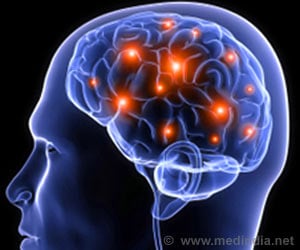Some expectant parents play classical music for their unborn babies, hoping to boost their children's cognitive capacity later in life.

‘Our sensory systems are shaped by the environment from a very early age. By identifying a source of early sensory nerve signals, study could lead to new ways to diagnose cognitive deficits.’





A new study led by University of Maryland neuroscientists is the first to identify a mechanism that could explain such an early link between sound input and cognitive function, often called the "Mozart effect." Working with an animal model, the researchers found that a type of cell present in the brain's primary processing area during early development, long thought to form structural scaffolding with no role in transmitting sensory information, may conduct such signals after all. The results, which could have implications for the early diagnosis of autism and other cognitive deficits, were published in the online early edition of the Proceedings of the National Academy of Sciences on November 6, 2017.
"Previous research documented brain activity in response to sound during early developmental phases, but it was hard to determine where in the brain these signals were coming from," said Patrick Kanold, a professor of biology at UMD and the senior author of the research paper. "Our study is the first to measure these signals in an important cell type in the brain, providing important new insights into early sensory development in mammals."
Working with young ferrets, Kanold and his team directly observed sound-induced nerve impulses in subplate neurons for the first time. During development, subplate neurons are among the first neurons to form in the cerebral cortex--the outer part of the mammalian brain that controls perception, memory and, in humans, higher functions such as language and abstract reasoning. Subplate neurons help guide the formation of neural circuits, in the same way that a temporary scaffolding helps a construction crew build walls and install windows on a new building.
Much like construction scaffolding, the role of subplate neurons is thought to be temporary. Once the brain's permanent neural circuits form, most of the subplate neurons die off and disappear. According to Kanold, researchers assumed that subplate neurons had no role in transmitting sensory information, given their temporary structural role.
Advertisement
However, researchers had struggled to reconcile this conventional model with observations of sound-induced brain activity much earlier in the developmental process. Until his group directly measured the response of subplate neurons to sound, Kanold said, the phenomenon had largely been overlooked.
Advertisement
By identifying a source of early sensory nerve signals, the current study could lead to new ways to diagnose autism and other cognitive deficits that emerge early in development. Early diagnosis is an important first step toward early intervention and treatment, Kanold noted.
"Now that we know subplate neurons are transmitting sensory input, we can begin to study their functional role in development in more detail," Kanold said. "What is the role of sensory experience at this early stage? How might defects in subplate neurons correlate with cognitive deficits and conditions like autism? There are so many new possibilities for future research."
Kanold's findings are already drawing interest from researchers who study sensory development in humans. Rhodri Cusack, a professor of cognitive neuroscience at Trinity College Dublin, in Ireland, noted that the results could have implications for the care of premature infants.
"This paper shows that our sensory systems are shaped by the environment from a very early age," Cusack said. "In human infants, this includes the third trimester, when many preterm infants spend time in a neonatal intensive care unit. The findings are a call to action to identify enriching environments that can optimize sensory development in this vulnerable population."
Source-Eurekalert













